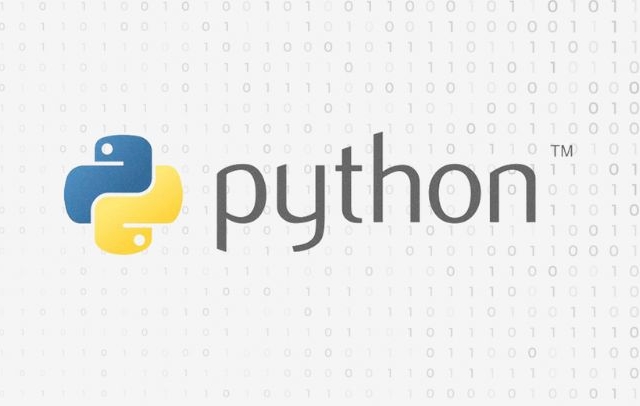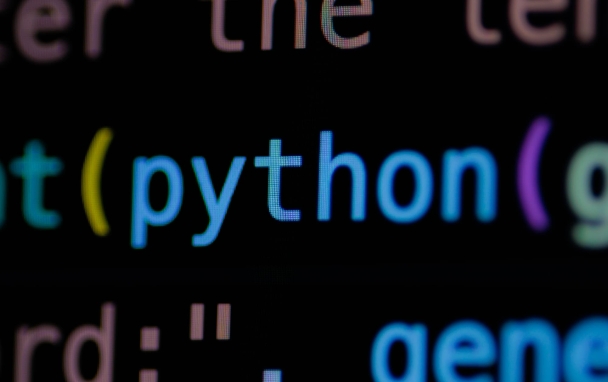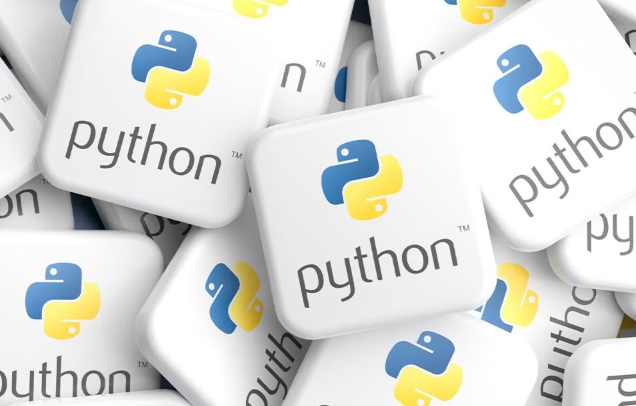Python manages memory automatically using reference counting and a garbage collector. Reference counting tracks how many variables refer to an object, and when the count reaches zero, the memory is freed. However, it cannot handle circular references, where two objects refer to each other but are unreachable. To address this, Python uses the garbage collector (gc module) to detect and clean up such cycles. Additionally, Python optimizes memory allocation for small objects through internal pools and reuses freed memory, improving performance. Users can control garbage collection with functions like gc.enable(), gc.disable(), and gc.collect(), though Python typically handles this automatically.

Python handles memory management automatically, which is one of the reasons it's so user-friendly. You don't have to manually allocate or free up memory like you might in lower-level languages such as C or C . Instead, Python uses a combination of techniques under the hood — mainly reference counting and a garbage collector for more complex cases.

Reference Counting Explained
At the core of Python’s memory management is reference counting. Every time you create an object, Python keeps track of how many references (or variables) point to that object. As soon as the reference count drops to zero — meaning nothing is pointing to it anymore — Python automatically frees up the memory used by that object.

For example:
x = "hello" # string object created, reference count = 1 y = x # reference count becomes 2 del x # reference count drops to 1
As long as at least one variable refers to the object, it stays in memory. When all references are deleted or go out of scope, the memory is released immediately.

This system is fast and efficient, but there's a catch: it can’t detect circular references.
What About Circular References?
A circular reference happens when two objects refer to each other, even if no external variable refers to either of them. In that case, their reference counts never drop to zero, even though they’re unreachable from your code.
Example:
a = [] b = [] a.append(b) b.append(a)
Now a contains b, and b contains a. If you do del a and del b, both objects still technically have a reference count of 1 because they reference each other — even though nothing else points to them. This creates a memory leak if left unhandled.
To solve this, Python has a separate garbage collector (gc module) that periodically looks for and cleans up these unreachable cycles.
You can control this behavior using the gc module:
-
gc.enable()– turns on automatic garbage collection -
gc.disable()– turns it off -
gc.collect()– manually triggers a collection cycle
By default, Python runs garbage collection periodically based on allocations and deallocations.
How Memory Is Allocated Internally
Python also does some internal optimizations to manage small objects efficiently. It uses pools and blocks to reduce overhead when creating and destroying many small objects (like integers, short strings, or small lists).
Here’s a simplified breakdown:
- Small objects (under 512 bytes) are handled by the Python memory allocator
- Larger chunks fall back to the system’s
malloc() - Python reuses freed memory when possible instead of asking the OS every time
This makes operations like list appends or dictionary updates faster than they would be with raw system calls.
Also worth noting: Python doesn’t always return memory to the operating system immediately. So even if you delete large chunks of data, your process may still hold onto that memory in case it needs it again later.
That’s basically how Python manages memory behind the scenes. The main takeaway is: you usually don’t have to worry about it, but understanding how it works helps avoid issues like memory leaks or performance bottlenecks.
The above is the detailed content of How does Python memory management work?. For more information, please follow other related articles on the PHP Chinese website!

Hot AI Tools

Undress AI Tool
Undress images for free

Undresser.AI Undress
AI-powered app for creating realistic nude photos

AI Clothes Remover
Online AI tool for removing clothes from photos.

Clothoff.io
AI clothes remover

Video Face Swap
Swap faces in any video effortlessly with our completely free AI face swap tool!

Hot Article

Hot Tools

Notepad++7.3.1
Easy-to-use and free code editor

SublimeText3 Chinese version
Chinese version, very easy to use

Zend Studio 13.0.1
Powerful PHP integrated development environment

Dreamweaver CS6
Visual web development tools

SublimeText3 Mac version
God-level code editing software (SublimeText3)

Hot Topics
 Polymorphism in python classes
Jul 05, 2025 am 02:58 AM
Polymorphism in python classes
Jul 05, 2025 am 02:58 AM
Polymorphism is a core concept in Python object-oriented programming, referring to "one interface, multiple implementations", allowing for unified processing of different types of objects. 1. Polymorphism is implemented through method rewriting. Subclasses can redefine parent class methods. For example, the spoke() method of Animal class has different implementations in Dog and Cat subclasses. 2. The practical uses of polymorphism include simplifying the code structure and enhancing scalability, such as calling the draw() method uniformly in the graphical drawing program, or handling the common behavior of different characters in game development. 3. Python implementation polymorphism needs to satisfy: the parent class defines a method, and the child class overrides the method, but does not require inheritance of the same parent class. As long as the object implements the same method, this is called the "duck type". 4. Things to note include the maintenance
 2025 quantitative trading skills: Python's automatic brick-moving strategy, making a daily profit of 5% as stable as a dog!
Jul 03, 2025 am 10:27 AM
2025 quantitative trading skills: Python's automatic brick-moving strategy, making a daily profit of 5% as stable as a dog!
Jul 03, 2025 am 10:27 AM
The digital asset market attracts global attention with its high volatility. In this environment, how to steadily capture returns has become the goal pursued by countless participants. Quantitative trading, with its dependence on data and algorithm-driven characteristics, is becoming a powerful tool to deal with market challenges. Especially in 2025, this time node full of infinite possibilities is combined with the powerful programming language Python to build an automated "brick-moving" strategy, that is, to use the tiny price spreads between different trading platforms for arbitrage, which is considered a potential way to achieve efficient and stable profits.
 Python `@classmethod` decorator explained
Jul 04, 2025 am 03:26 AM
Python `@classmethod` decorator explained
Jul 04, 2025 am 03:26 AM
A class method is a method defined in Python through the @classmethod decorator. Its first parameter is the class itself (cls), which is used to access or modify the class state. It can be called through a class or instance, which affects the entire class rather than a specific instance; for example, in the Person class, the show_count() method counts the number of objects created; when defining a class method, you need to use the @classmethod decorator and name the first parameter cls, such as the change_var(new_value) method to modify class variables; the class method is different from the instance method (self parameter) and static method (no automatic parameters), and is suitable for factory methods, alternative constructors, and management of class variables. Common uses include:
 Understanding the Performance Differences Between Golang and Python for Web APIs
Jul 03, 2025 am 02:40 AM
Understanding the Performance Differences Between Golang and Python for Web APIs
Jul 03, 2025 am 02:40 AM
Golangofferssuperiorperformance,nativeconcurrencyviagoroutines,andefficientresourceusage,makingitidealforhigh-traffic,low-latencyAPIs;2.Python,whileslowerduetointerpretationandtheGIL,provideseasierdevelopment,arichecosystem,andisbettersuitedforI/O-bo
 Strategies for Integrating Golang Services with Existing Python Infrastructure
Jul 02, 2025 pm 04:39 PM
Strategies for Integrating Golang Services with Existing Python Infrastructure
Jul 02, 2025 pm 04:39 PM
TointegrateGolangserviceswithexistingPythoninfrastructure,useRESTAPIsorgRPCforinter-servicecommunication,allowingGoandPythonappstointeractseamlesslythroughstandardizedprotocols.1.UseRESTAPIs(viaframeworkslikeGininGoandFlaskinPython)orgRPC(withProtoco
 Python Function Arguments and Parameters
Jul 04, 2025 am 03:26 AM
Python Function Arguments and Parameters
Jul 04, 2025 am 03:26 AM
Parameters are placeholders when defining a function, while arguments are specific values ??passed in when calling. 1. Position parameters need to be passed in order, and incorrect order will lead to errors in the result; 2. Keyword parameters are specified by parameter names, which can change the order and improve readability; 3. Default parameter values ??are assigned when defined to avoid duplicate code, but variable objects should be avoided as default values; 4. args and *kwargs can handle uncertain number of parameters and are suitable for general interfaces or decorators, but should be used with caution to maintain readability.
 Describe Python garbage collection in Python.
Jul 03, 2025 am 02:07 AM
Describe Python garbage collection in Python.
Jul 03, 2025 am 02:07 AM
Python's garbage collection mechanism automatically manages memory through reference counting and periodic garbage collection. Its core method is reference counting, which immediately releases memory when the number of references of an object is zero; but it cannot handle circular references, so a garbage collection module (gc) is introduced to detect and clean the loop. Garbage collection is usually triggered when the reference count decreases during program operation, the allocation and release difference exceeds the threshold, or when gc.collect() is called manually. Users can turn off automatic recycling through gc.disable(), manually execute gc.collect(), and adjust thresholds to achieve control through gc.set_threshold(). Not all objects participate in loop recycling. If objects that do not contain references are processed by reference counting, it is built-in
 Explain Python generators and iterators.
Jul 05, 2025 am 02:55 AM
Explain Python generators and iterators.
Jul 05, 2025 am 02:55 AM
Iterators are objects that implement __iter__() and __next__() methods. The generator is a simplified version of iterators, which automatically implement these methods through the yield keyword. 1. The iterator returns an element every time he calls next() and throws a StopIteration exception when there are no more elements. 2. The generator uses function definition to generate data on demand, saving memory and supporting infinite sequences. 3. Use iterators when processing existing sets, use a generator when dynamically generating big data or lazy evaluation, such as loading line by line when reading large files. Note: Iterable objects such as lists are not iterators. They need to be recreated after the iterator reaches its end, and the generator can only traverse it once.






